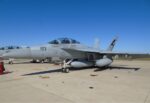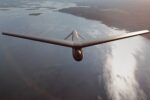Italy has officially launched the “M3A” (Maritime Advanced Multimission Aircraft) program aimed at restoring its full-spectrum maritime patrol and anti-submarine warfare (ASW) capabilities. The initiative signals a strategic pivot by Rome to reassert naval air power in the Mediterranean amid growing submarine threats and NATO interoperability demands.
Strategic Context: Why Italy Needs a New Maritime Patrol Platform
For decades, Italy relied on a fleet of Breguet Atlantic and later ATR 72-based P-72A aircraft for maritime patrol roles. However, the current inventory of four P-72As—delivered between 2016 and 2017—is optimized for maritime surveillance but lacks full ASW capability. These aircraft are equipped with advanced radar and EO/IR sensors but were delivered without sonobuoy launchers or magnetic anomaly detectors (MAD), limiting their utility in anti-submarine operations.
This capability gap has become increasingly critical as Russia expands submarine deployments in the Eastern Mediterranean and North Africa sees growing naval activity. Italy’s geographic position as a NATO southern flank anchor makes it essential for Rome to field a credible airborne ASW force capable of tracking diesel-electric submarines operating in littoral environments.
The M3A Program: Scope and Objectives
The newly announced M3A program aims to deliver at least six next-generation multirole maritime patrol aircraft with full ASW functionality. According to Italian defense sources cited by RID (Rivista Italiana Difesa) and RID Online, the program is expected to be funded under Italy’s Multi-Year Planning Document (Documento Programmatico Pluriennale – DPP) 2024–2026 cycle.
Key objectives of the M3A program include:
- Restoring full ASW capability with sonobuoy deployment/reception systems
- Incorporating MAD sensors for close-range submarine detection
- Integrating torpedo launch capability (likely MU90 or similar lightweight torpedoes)
- Ensuring NATO-standard Link-16/22 datalink interoperability
- Hosting advanced radar such as Leonardo’s Seaspray AESA series or equivalent
The Italian Air Force will operate these assets under joint coordination with the Navy, reflecting an integrated approach similar to that adopted by other NATO members like France and Germany.
Platform Candidates: What Could Replace the P-72?
No official platform has been selected yet for M3A, but several candidates are under consideration:
Boeing P-8A Poseidon
The most capable option would be procurement of Boeing’s P-8A Poseidon—a proven platform used by the U.S., UK, Norway, Germany, South Korea, Australia and others. It offers unmatched range (~7,500 km), endurance (~10 hours), high-altitude ASW operations via multi-static sonobuoys, onboard weapons bay for Mk54 torpedoes/Harpoon missiles, AN/APY-10 radar suite, and robust NATO interoperability. However, its cost (~$220 million per unit) may exceed Italy’s budget expectations unless offset via Foreign Military Financing or European Defense Fund co-financing.
Leonardo ATR-based Solution
A more likely candidate is an upgraded version of Leonardo’s ATR 72MP platform—already in service as the P-72A—with added ASW features. Leonardo could integrate MAD booms (as seen on older Atlantics), sonobuoy dispensers from Ultra or L3Harris models compatible with NATO standards (e.g., SSQ series), enhanced mission system software from ATOS (Airborne Tactical Observation & Surveillance), plus torpedo hardpoints underwing.
AIRBUS C295MPA “Persuader”
The Airbus C295MPA is another contender fielded by Spain and Chile. It offers a modular sensor suite including FITS mission system (Fully Integrated Tactical System), optional MAD boom integration capability demonstrated on testbeds in Seville since 2021–2022 trials. It supports torpedoes like Mk46/MU90 via wing pylons. Its advantage lies in lower acquisition/operating costs compared to jet-powered platforms like P-8.
Industrial Implications for Leonardo and Italian Aerospace Base
If Leonardo secures the contract—as many expect—it would reinforce Italy’s domestic aerospace base while allowing greater sovereign control over mission system integration. The company already produces key components such as:
- Seaspray AESA radars (used on UK Royal Navy Wildcats)
- ATOS mission management suite deployed globally on MPAs
- Torpedo integration experience from NH90 NFH helicopter programs
An Italian-built solution would also align with EU strategic autonomy goals under initiatives like Permanent Structured Cooperation (PESCO). However, if Rome opts for off-the-shelf U.S.-made platforms like the P-8 Poseidon due to urgency or alliance pressure—similar to Germany’s recent shift—it could limit domestic industrial participation beyond logistics support roles.
NATO Interoperability Requirements Drive Urgency
NATO has repeatedly emphasized shortfalls in European airborne ASW capacity since Russia’s annexation of Crimea in 2014. The Alliance’s Maritime Command (MARCOM) has flagged gaps in persistent undersea surveillance across southern Europe—especially around chokepoints like Sicily Channel and Eastern Med approaches near Cyprus/Syria/Libya theaters.
The addition of six fully equipped Italian MPAs would significantly bolster NATO’s ability to maintain continuous acoustic coverage across these zones using passive/active sonar networks supported by air assets. Participation in exercises such as Dynamic Mongoose or Sea Guardian will likely be key benchmarks once platforms are delivered post-2028 timeframe.
Manning Challenges and Training Pipeline Considerations
A renewed MPA force requires not just hardware but trained crews—including sensor operators familiar with sonar data interpretation—and maintenance personnel certified on new systems. Italy may need to expand training cooperation with allies already operating full-capability MPAs such as Norway or France—or even host joint training centers akin to those used for F-35 pilot conversion at Amendola AB.
Outlook: Timeline and Strategic Payoff
The DPP outlines initial funding allocation starting FY2024 with prototype development beginning no later than Q1–Q2 FY2026. IOC is tentatively targeted for late FY2028 or early FY2029 depending on platform selection timelines.
If successfully executed within budget constraints (~€1–1.5 billion total estimate), M3A could restore Italy’s status as a leading Mediterranean naval air power while reinforcing NATO southern flank deterrence posture against both state actors like Russia and asymmetric threats such as illicit trafficking/submarine smuggling networks exploiting littoral blind spots.










